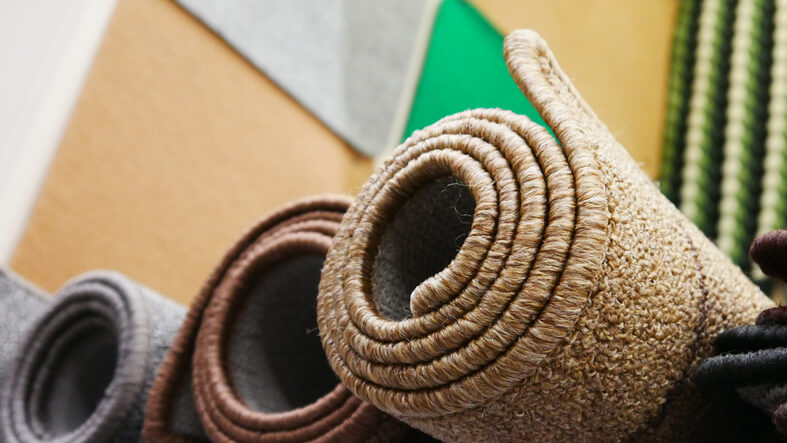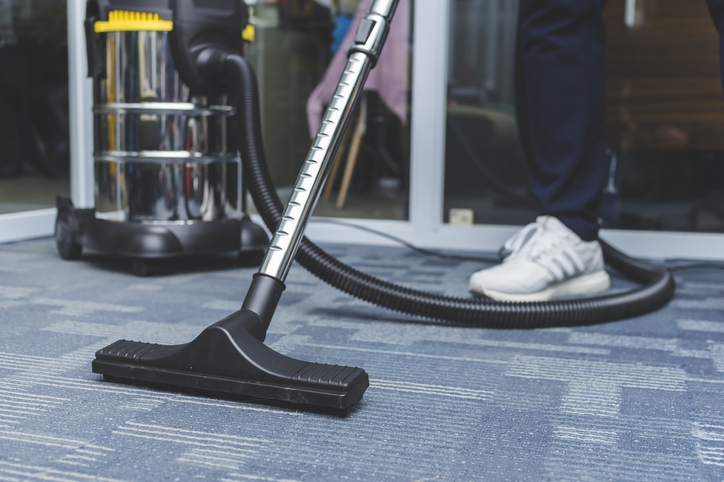Keeping industrial carpets clean is crucial for maintaining a professional and healthy environment in any commercial space. These carpets endure constant foot traffic and are prone to dirt, debris, and stains. This guide will explain how to clean industrial carpets effectively and explore various cleaning methods that enhance the carpet’s appearance and longevity.
We’ll also cover maintenance strategies to extend the life of your carpet, ensuring your workplace stays pristine and hygienic.
Why Cleaning Industrial Carpets Is Important?
Industrial carpets, due to their heavy use, quickly accumulate dust, grime, and stains. When left uncleaned, carpets not only lose their aesthetic appeal but also become a breeding ground for allergens and bacteria, compromising air quality.
Learning how to clean industrial carpets efficiently is vital for maintaining the cleanliness and air quality of your workspace. Regular cleaning also increases the lifespan of the carpet, saving money on replacement costs in the long run.
How Often Should You Clean Industrial Carpets?
- High-traffic areas (lobbies, corridors, entrances): Clean every 1-2 weeks.
- Medium traffic areas (offices, meeting rooms): Clean 2-4 times per year.
- Low traffic areas (storage rooms, back offices): Clean 1-2 times annually.
By sticking to a consistent cleaning schedule, you’ll protect your carpet from excessive wear and tear and maintain its appearance.
Techniques on How to Clean Industrial Carpet
There are several professional techniques to choose from when deciding how to clean industrial carpets effectively. Each method offers unique advantages, depending on the type of stains, dirt levels, and carpet material.
Dry Carpet Cleaning
Dry carpet cleaning is a low-moisture method that involves applying a specialized cleaning powder that binds with dirt particles. The powder dries into crystals that are then vacuumed, leaving the carpet clean and ready for immediate use.
Steps for dry carpet cleaning:
- Sprinkle the cleaning powder across the carpet.
- Use a machine to agitate the powder into the carpet fibers.
- Vacuum up the dried powder and trapped dirt.
This method is ideal for areas that need quick cleaning with minimal downtime, as carpets can be used immediately afterward.
Hot Water Extraction (Steam Cleaning)
Hot water extraction, often called steam cleaning, is a popular and highly effective method for deep cleaning carpets. This method injects hot water and cleaning agents deep into the carpet fibers, breaking down dirt and stains, which are then extracted using a powerful vacuum.
Steps for hot water extraction:
- Pre-treat any heavily soiled areas with a carpet cleaning solution.
- Use a steam cleaning machine to inject hot water into the carpet.
- Extract the water and loosen the dirt with a high-powered vacuum.
Steam cleaning is best for heavily soiled carpets, as it removes deep stains and allergens, ensuring a thorough clean.
Encapsulation
Encapsulation is another low-moisture technique that uses a specialized cleaning foam. When applied to the carpet, the foam surrounds dirt particles, forming a crystallized substance once dried, which can then be vacuumed away.
Steps for encapsulation:
- Apply the encapsulating foam to the carpet.
- Let the foam dry, allowing the dirt to be encapsulated.
- Vacuum the dried crystals and dirt from the carpet.
Encapsulation is ideal for carpets that require frequent cleaning without leaving residue or wet spots.
Bonnet Cleaning
Bonnet cleaning is often used for surface-level cleaning in high-traffic areas. This method involves using a rotary machine with an absorbent pad that spins over the surface of the carpet, absorbing dirt and moisture.
Steps for bonnet cleaning:
- Apply a light cleaning solution to the surface of the carpet.
- Use the rotary machine with an absorbent bonnet pad to clean the carpet.
- Replace the bonnet pad as it becomes soiled, continuing until the surface is clean.
This method is ideal for quick, interim cleaning sessions but does not provide deep cleaning for embedded dirt.
Spot Cleaning for Industrial Carpets
Industrial carpets are prone to spills and stains. Knowing how to clean industrial carpet stains quickly is key to preventing permanent damage. Spot cleaning can save you from replacing the carpet due to stubborn stains.
Here’s how to handle common carpet stains:
- Grease or oil stains: Use a solvent-based cleaner specifically designed for oily stains.
- Mud and dirt: Allow mud to dry first, then vacuum. Use a mixture of mild detergent and water for additional cleaning.
- Coffee or food spills: Blot the stain with a damp cloth and apply a carpet cleaning solution.
For severe stains or large spills, it may be best to call in professional cleaners to ensure the stain is fully removed.
Recommended Tools and Equipment for Cleaning Industrial Carpets
- Commercial vacuum cleaner: Look for models with HEPA filters to improve air quality while vacuuming.
- Steam cleaner or extraction machine: Uses hot water extraction, ensuring the deep cleaning of the carpet.
- Encapsulation machines: For low-moisture cleaning that can be done quickly.
- Rotary machines: Used for bonnet cleaning and agitating the carpet surface.
- Spot cleaning kits: Always have a spot-cleaning kit on hand for emergency spills.

How to Maintain Industrial Carpets Between Professional Cleanings?
In addition to regular professional cleanings, there are several steps you can take to maintain your industrial carpets between appointments. Here’s what you can do to extend the life of your carpet:
- Regular Vacuuming: Vacuuming high-traffic areas daily is essential for removing surface dirt before it embeds in the carpet fibers. For medium-traffic areas, aim to vacuum 2-3 times a week.
- Use Entrance Mats: Place mats at all entrances to minimize the amount of dirt and debris that gets tracked into your facility. Entry mats help reduce wear and tear on the carpet.
- Prompt Spot Treatment: Address spills immediately. The quicker you clean up a spill, the less likely it will result in a permanent stain.
- Rotate Furniture: Periodically rearrange furniture to prevent heavy wear in specific areas and allow the carpet to wear evenly.
- Stick to a Professional Cleaning Schedule: Ensure you adhere to a regular cleaning schedule, whether it’s dry cleaning, hot water extraction, or encapsulation. This will keep your carpets in their best condition for longer.
Green Cleaning Options for Industrial Carpets
Sustainability is becoming increasingly important for businesses. When learning how to clean industrial carpets, consider eco-friendly cleaning methods. Many commercial cleaners now offer green solutions that use biodegradable, non-toxic agents. These solutions provide the same level of cleanliness while reducing environmental impact.
Choosing green cleaning products ensures the safety of your employees and reduces harmful chemicals in your facility.
Final Thoughts: Keep Your Industrial Carpets in Top Condition
Understanding how to clean industrial carpets properly will save you time, money, and effort. Whether you’re using professional services or handling spot treatments yourself, it’s important to follow best practices for carpet care. With the right cleaning schedule and techniques, your industrial carpet will look better, last longer, and contribute to a healthier workplace.
For the best results, hire a professional cleaning company with experience in industrial carpet cleaning. Professional services ensure that your carpets are deep cleaned using the most appropriate methods and tools for long-term maintenance.
Regency Cleaning Services has the expertise and equipment to effectively clean and maintain industrial carpets so that you won’t have to! Contact us today to clean your industrial carpets to keep them looking great and extend their lifespan.


